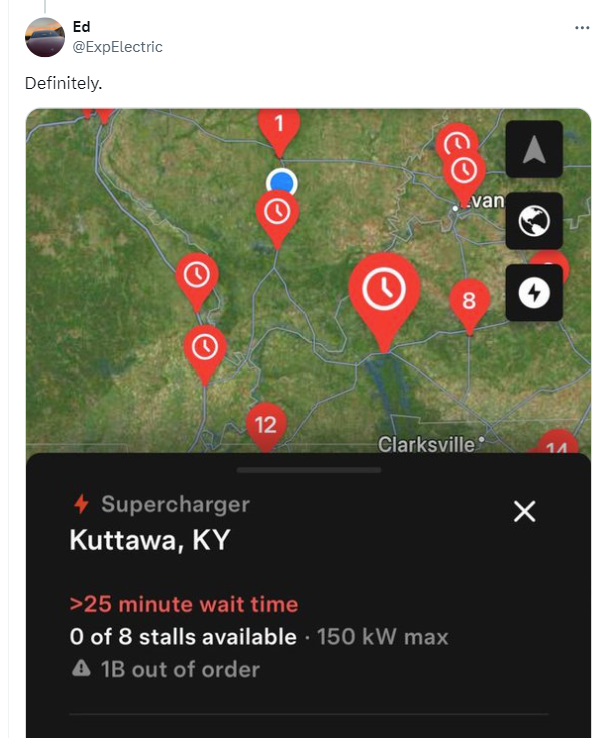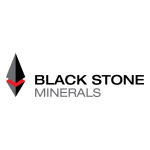Sign up for daily news updates from CleanTechnica on email. Or follow us on Google News!
Normally, there’s a lot of balance in people’s travel needs. While some routes certainly carry more traffic than others and holiday weekends can be busier, people tend to head one way and then head back. But, everyone has different destinations, so it’s rare for any one part of the charging meta-network to shoulder too many travelers at one time.
But, what happens when everyone is headed to the same destination at the same time and then everyone is headed back home after? The eclipse gave us just such a scenario, making the whole United States go through a sort of mega rush hour. Everyone wasn’t headed to one point, but everyone wanted to be on the line where the total eclipse was visible, and they all had to be there at the same time to see it. Then, that evening or the next day, everyone started heading back to where they came from at around the same time!
Let’s take a look at how that went!
The night before the eclipse, things were a little tough in San Antonio.
📢 The State of DC Charging in San Antonio T-14 hours from the #eclipse 📢
Only 12 CCS plugs (>99 kW) total and only 1 is available.
51 NACS (V3 Superchargers) plugs are available.
Metro population of 2.5 million ‼️
We need way more EV charging here🔌⚡@JenniferSensiba… pic.twitter.com/Y653shWtKW
— ArtiePenguin1 (@MrArtiePenguin) April 8, 2024
In some ways, this isn’t a completely fair comparison, as he excluded many slower CCS stations that were still very useful. This is especially true for people who had come into town and were only planning on settling in for the night instead of trying to make the next city. But, it does show that we do need a lot more capacity for CCS vehicles. This will be at least partially alleviated by the adapters coming out for most CCS vehicles to charge at Supercharger stations.
Before anybody says it, this isn’t just a CCS issue. Looking at the Supercharger network, people saw some unusual wait times during this unusual demand, too.
On the day of the eclipse, traffic was fairly light. People weren’t headed home yet, so charging networks weren’t congested. But, that evening and night, and the next day, things started to get congested again as people made the trek home from the line.
Hey @TeslaCharging
Please do something along I10 in Texas. This is Fort Stockton
Only 8 stalls. 1 out of order. 18 cars waiting. Help!! pic.twitter.com/sOhSYwr7Fm— Krīs 💫🌹💖 (@teslanatrix) April 10, 2024
To Be Perfectly Fair
Before I move on with the takeaways here, I want to make it very, very clear that this isn’t a diss on the EV charging network, whether for Tesla or non-Tesla EVs. This is a very unusual situation that puts tons of extra demand on the network. It’s almost never economical to build any kind of a network to handle the absolute peak of demand in the most unusual times because you’re then paying for all that extra capacity when it’s not being used 99% of the time.
Perhaps more importantly, over-building the charging network on the interstates while neglecting the rest of the network buildout everywhere else would be a bigger problem. Tesla has basic service on most interstates right now, and is not working to expand the reach of vehicles relying on Superchargers into the backcountry. Then, once there’s at least basic capacity everywhere, providers can start focusing on building more stations with dozens of stalls.
The other providers put together are still building out even basic highway support, so it definitely makes sense for that to continue a little longer.
What This Says About Future Demand
While I’m not going to use this to take a dump on anybody’s EV charging efforts, there’s still a “needs improvement” takeaway here that’s both reasonable and something haters wouldn’t think to say.
When we see these kinds of weird demand spikes this early in the EV adoption cycle, what we’re really seeing is what things will look like in the future on any given Tuesday at 11 AM. If you stand at any charging station near the interstate and then imagine all of the cars driving by needing a place to charge, it becomes clear that the adoptions floodgates really still haven’t opened yet.
But, just because we can’t directly see what it would look like if all of those cars had to charge doesn’t mean that we can’t look for little indicators of what that might look like. Today’s highly unusual demand lets us draw some lessons we can use as the network gets built today!
One big thing we can probably take from this is that interstates and other major highways aren’t going to be served for much longer with stations that only have 4-8 stalls. But, the NEVI plan that’s supposed to guide the next five years of charging only calls for 4 stalls every 50 miles. It should be painfully obvious that it won’t take much additional demand for charging to completely swamp that.
We’re starting to see some Tesla Supercharger stations with dozens of stalls on busier routes, but we really can’t depend on one company to do it all. So, we need to be encouraging companies of all kinds to get in on this sooner instead of later when the system is overwhelmed.
The other thing we can learn from this is is that we really need more chargers in more places. Having a big, giant charging park every 50 miles would be better than today by far, but everyone can’t be expected to go to just one place to charge in every town. All of the small businesses in small towns, and all of the businesses in every sized town need to give themselves a shot at the travel business they already depend on.
So, charging can’t be just a charging company thing. Every company, from the big restaurant chains to the little curio shop needs to be looking at having some form of charging in the lot to attract people to spend time there instead of at competitors. Businesses that primarily serve local needs probably won’t need this as much. But, businesses that cater to travelers can live or die by the decision to have charging.
Finally, we need to manage driver expectations a little better as we have more unusual events in the coming years. the next U.S. eclipse won’t happen until the 2040s, but people need to understand going in that on some busy holiday weekends they might find unexpected wait times. For those of us used to struggling to charge, this isn’t a big deal. But, people coming from an ICE ownership experience might not like this very much at all!
Featured image by NASA (Public Domain).
Have a tip for CleanTechnica? Want to advertise? Want to suggest a guest for our CleanTech Talk podcast? Contact us here.
Latest CleanTechnica.TV Video
CleanTechnica uses affiliate links. See our policy here.






